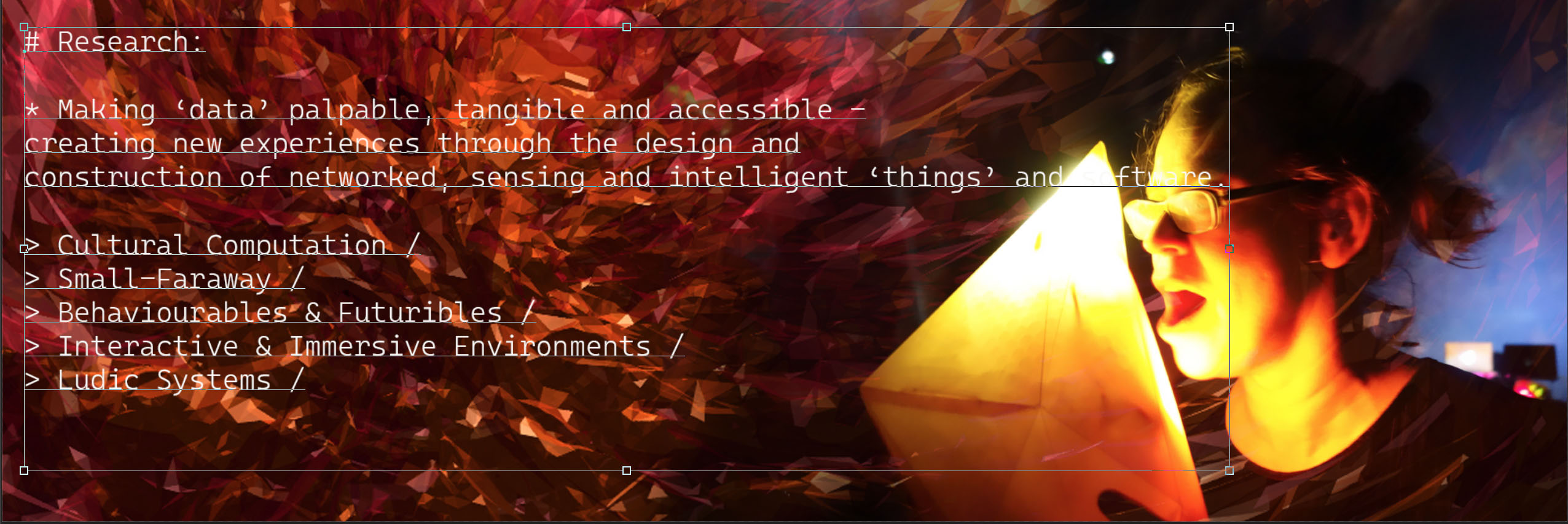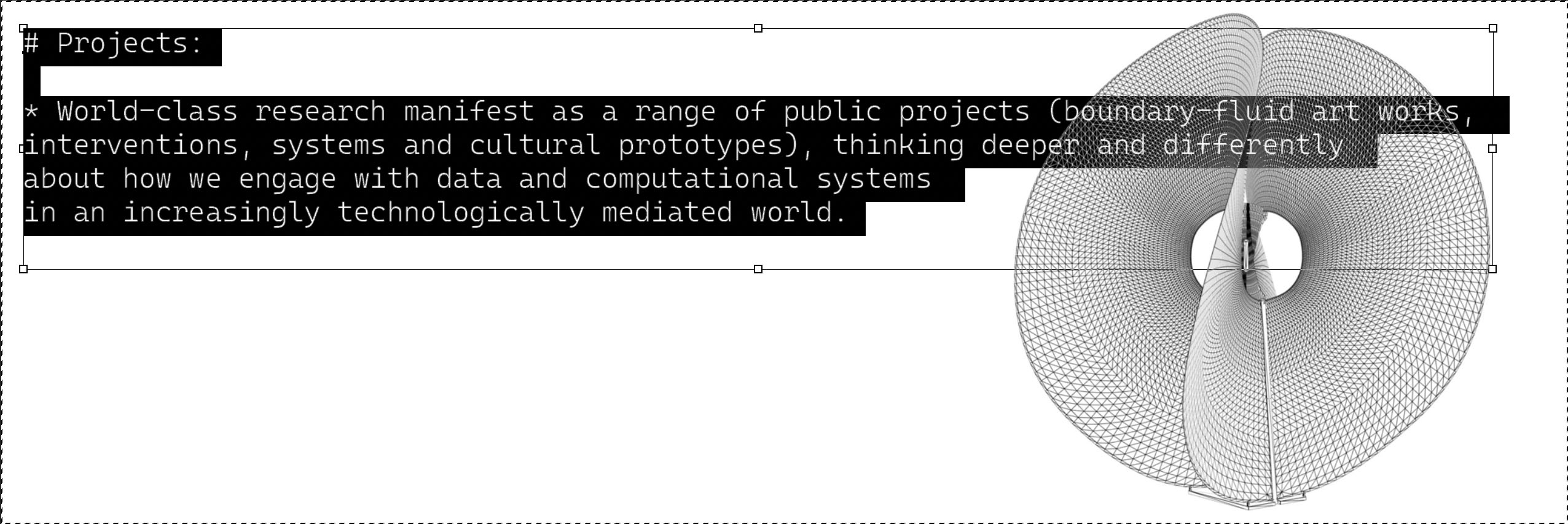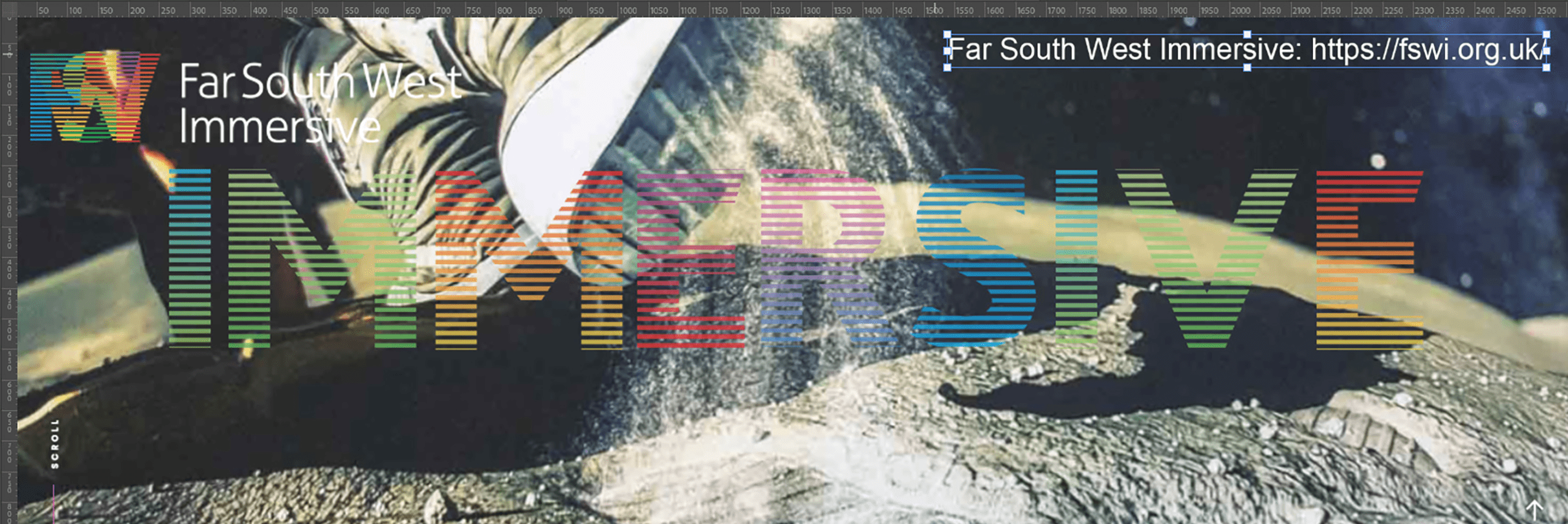Framing Immersion, Stories from an Emerging Market.
South West Creative Technology Network Immersion Theme publication.
Written by: Mark Leaver
Edited by: Hannah Brady & Jon Dovey
Published by: SWCTN Watershed, 1 Canon’s Road, Harbourside, Bristol, BS1 5TX
https://swctn.org.uk/wp-content/uploads/2019/07/SWCTN_Immersion_Showcase_Publication_D.pdf. 07/2019.
Mike Phillips bit: Wonderful Instabilities.
Ascii here:
THINKBOX 4 WONDERFUL INSTABILITIES Let’s be honest, if we wanted to make the kinds of immersive experiences we dream of, we wouldn’t have built these clunky technologies. In most cases they are an accident of history and a stuttering step along an evolutionary path. The kinds of immersive experiences we dream of are not fettered by resolution, frame rates and compression codecs, let alone the tethered isolation of an HMD. We are witnessing the emergence of something, not the culmination or a fixed and steady state. And this emergence has been a long time coming, from ancient domed architectures, a peek into the spherical heavens of the Flammarion, the globes of Gottorf and Wyld, Nagy’s Vision in Motion, the domes of Zeiss and Fuller, and the breath taking submersive immersion of Davies’ Osmose, all baby steps on the path to total immersion. Such a long history and yet it seems so new and shiny. This collective cultural amnesia was probably ignited somewhere in the early 15th century when Alberti threw a major spanner in the works. His Della pittura radically reduced our field of view and constrained our outlook by squeezing everything into a rectangle. A perspectival shift that placed us here and the world somewhere over there, totally unimmersed. He ignored the spherical world, the dome of the cosmos overhead, and the sphere of the eye, even, over time, the circular lens became constricted by the rectangle of the photographic plate. This persistence of a particular type of vision became entrenched through the forms of Cinema and Television and lingers into the mindset of VR production. The hegemony of the culture of the eye has been framed by the Albertian window at the cost of things outside our normal frame of reference (the micro and the macro and the small far away) and technologies that simply don’t fit. Although predating perspective, immersive experiences and the technologies that enable them provide a new unstable perspective on the world. This instability requires new practices intertwined with new technologies. They allow creatives to embrace lensless digital imaging technologies that provide access to a photon from the edge of the universe and the atomic forces that bind the molecular substrate, a whole new vocabulary for articulating the world. Pure data from Atomic Force Microscopes, Scanning Electron Microscopes, X-ray computed tomography and Radio telescopes open up new immersive experiences, as more dimensions are unveiled, more realities are modelled and more truths envisioned. There are more things in heaven and earth than currently understood in our media philosophy. Immersion is the George Kaplan of media forms, a Macguffin of ubiquitous proportions, something so dominating to the plot that it isn’t really there. So, which came first the experience, the audience, the creative practice or the technology? You can’t make immersive media without breaking some forms. What this wonderful instability does is spark new production pathways, new tools, new practices, new work, new experiences, new distribution platforms, new license models, new audiences and new histories to be rediscovered. We can all now sit at the centre of our own shared spherical umwelt, inside something rather than once removed. It’s curtains for the Albertian window. Mike Phillips Professor of Interdisciplinary Arts at Plymouth University, the Director of Research at i-DAT







You must be logged in to post a comment.